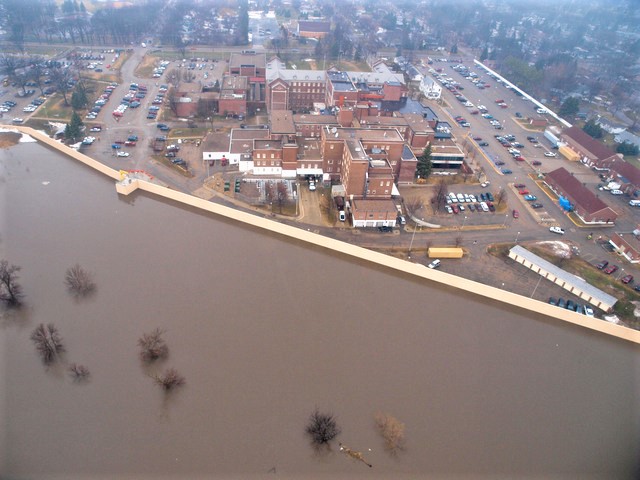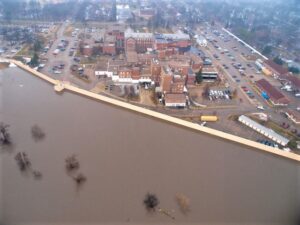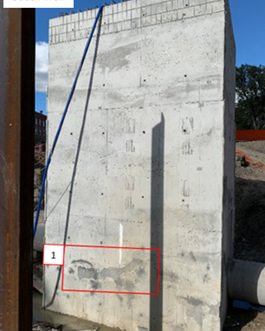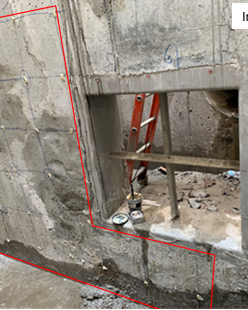Background
In 2021, the City of Fargo, North Dakota constructed a network of structures to protect the Oak Grove neighborhood from river flooding. One of the significant structures constructed during the project was a new storm sewer gatewell near the south entrance of the park, along with a network of flood-protection measures that include several earthen levees, concrete and sheet pile floodwalls, and storm stewers.
The gatewell structure is a 30-foot-high rectangular shaft used to regulate the flow of floodwater in the event of a river flood. When the structure was placed in August of 2021, limited accessibility for the pump truck resulted in significant delays in the placement of the concrete. When the forms were stripped, pour lines and consolidation voids, also known as honeycombing, were observable on the four exterior walls and single interior wall.

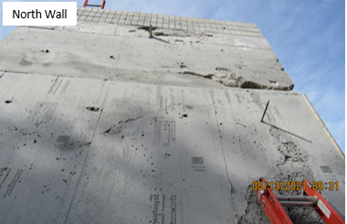
Nondestructive Evaluation
The honeycombing was significant enough to raise concerns over the ability of the structure to remain intact and hold water in the event of a flood. If the client desired to make any repairs to the structure, it would require testing but if adequate repairs could not be made, the structure would be removed and replaced. The significant visible honeycombing and pour lines were chipped out and patched on the interior wall as pictured in Figure 1. Braun Intertec was engaged to nondestructively evaluate the soundness of the repairs.
Braun Intertec consultants evaluated ten repaired areas using Ultrasonic Pulse Velocity (UPV). A 1-foot grid was set up over the patched areas, which extended 1-2 feet outside of the patch into the native concrete. Each grid location (Figures 2-6) was evaluated using UPV.
The UPV process involved sending a sound wave into one side of the wall and measuring the time it took for it to be received on the other side. If significant consolidation voids were present in the path of the sound wave, the wave would have to go around the void, increasing the time it takes to receive it on the other side of the wall. This can be observed in Figure 8.

UPV Findings
Locations with a measured velocity of sound below 3000 meters per second were flagged for analysis. The 3rd patch on the west wall Featured a velocity of 1935 meters per second, and the first patch on the same wall featured a velocity of 2602 meters per second. Cores were taken from both patches to better understand the quality of the material in those locations.


Honeycombing was visible in the middle of the third patch on the west wall (Figure 9), while no honeycombing was visible in the first patch (Figure 8). Braun Intertec scientists concluded that consolidation voids were adequately removed and repaired in all UPV locations featuring a measured velocity greater than 2606 meters per second. The only patch that did not meet that requirement was the third patch on the west wall, which required additional repairs.
Braun Intertec Solutions
With the results provided by the nondestructive evaluation, the client approved the structure and construction was able to continue without replacing the entire gatewell. Braun Intertec was able to help the contractor improve the quality of their repairs and provide a higher level of confidence to the project owner and engineer of record.
